In 2011 I built Classic Airframes 1/48 Spitfire Mk. Vc “Yankee Spitfires”. While I did get it together, I was not really pleased with the fit of the kit. It was only after I finished the model that I read Brett Green’s review of the kit, with some helpful tips that I really could have used ahead of time.
Fast forward to 2014… basically, now. 🙂 I picked up a new set of decals from Rising Decals, Yankee Spitfires in the MTO. One of the schemes showed a Spitfire Mk. Vc in an unusual three color camo. As soon as I saw it, I realized I wanted to build that kit- now. But where to find a Spitfire Mk. Vc?
Tamiya, Airfix and Hasegawa all have Mk. Vb kits available. And Airfix is due to release a retooling of their old Vb sometime this year. But I needed a C wing for this Spit.
Airfix did release a Mk. Vc kit, but it was basically a hybrid of their old Mk. Vb fuselage, with raised panel lines, and a new-tool C wing with recessed panel lines. I’d built the kit previously, but I wasn’t sure I wanted to do a scribing job on the fuselage.
I then considered purchasing a resin conversion set for the Tamiya kit. I’d built one in the past, using a Montex one-piece resin wing, and it was gorgeous. BUT…. those wings cost more than the kits. And aren’t easy to find. And while there are other resin conversions on the market, they are generally two piece offerings, and require surgery to the base kit to work. Not being a trained surgeon, I declined that route.
Which left the Classic Airframes kit.
It looks good in the box. it’s only when you build it that the problems come up. The biggest being the cockpit.
In theory, it should work nicely. Glue a sidewall onto each fuselage half, glue the fuselage halves together, and insert the IP and various bulkheads in from underneath. What could be simpler?
Nothing…. if the various parts that needed to be inserted weren’t wider than the available space, but a large margin. It’s too much to sand down the bulkheads edges. If you sanded it down enough, you’d lose the sides of the bulkheads and IP. By my measurements, they are over 1/8th of an inch too wide.
But this time around, I was armed with the experience from my previous build, and Brett Green’s handy list. (Trust me- read his list thoroughly BEFORE attempting this kit.)
The first thing I did was address the problem with the cockpit width. Knowing the bulkheads and IP were too wide, and sanding was not an adequate option, I decide to cut the sidewalls into three part. On each sidewall, there is a “blank space” where the IP and cockpit bulkheads are supposed to slide in. I decided that if I cut those areas out, it would leave room for the parts to slide in easily, and if needed, a few shims could fill in any gaps.
So I grabbed the trusty razor saw, made the appropriate cuts, and glued the sidewalls in place. Painting of the cockpit parts proceeded normally. (I won’t detail that…. you know how to paint a cockpit….) I did replace the kit seat with one from Ultracast.
Next I glued the fuselage together at the tail end only. I wanted to leave myself a little room to play with when it came to inserting the IP and cockpit bulkheads. The aft bulkheads slid right in- almost a perfect fit. Then I tried the IP.
It was still too wide.
I really have to wonder if MPM Productions actually builds any of their kits. (MPM Producitons produces Special Hobby, Azur, MPM and other short-run kits, and they produced this Classic Airframes kit too.)
In removing the areas of the sidewalls, I’d basically removed over 1/8th inches of plastic. Yet in trying to close the fuselage, the IP was still too wide by about 1/16th of an inch. So we’re talking about an error of at least 3/16ths of an inch in those parts. I don’t get into “scale inches” and so forth, but c’mon man…. that’s 9 scale inches too wide.
So I resorted to sanding down the IP on either side until it fit. Once I did that, the fuselage closed up with too much of a problem.
I then assembled the wings, following Brett Green’s suggestions. Mating them up to the fuselage showed a major gap at the aft part of the wing to fuselage join. The two surfaces simply would not meet together. I started off by sanding down the exposed lower portions of the fuselage sidewalls and bulkheads, but the fit was still very bad- leaving very large gaps. I finally realized that the culprit was not just the parts protruding down from the fuselage, but also the detail cast into the lower wing portion. The detail is supposed to represent the structure at the bottom of the cockpit area. However, only a very small portion of it is visible when you look down into the cockpit, so I removed all of it except what was visible. With that area cleaned up, the wing fit at the after part was good enough to get it set in place- heavily clamped, of course- and glued.
On to the front of the wing. The join at the leading edge of the wing and fuselage was also poor, requiring some small shims to be put in place to get that area closed up.
All this left a small but annoying gap, especially along one wing root. Tamiya Basic Putty, smoothed out with nail polish remover on a cotton bud, fixed this area.
You may be asking “Why didn’t you just glue the upper wing halves on to the fuselage instead? Sounds like a good plan, right? Well, I test fitted this theory early on, and simply could not find a way to get the cannon stubs to line up. And at this point I was not really open to filing them off and ordering aftermarket barrels simply because MPM doesn’t like to actually test build their kits. (I’m only assuming that… but having built a number of their kits, or kits they make, that is the only conclusion I can logically arrive it.)
So, we’re all past the issues? Right? Wings on… fuselage together…
If it were only so.
You’ll need to carve out extra space to get the tailplanes to fit. (Which you’d already know if you read Brett’s notes….) And the landing gear are difficult to get in place. I can quite describe how I got them in place, I just keep twisting and turning until they were there, and covered them in glue.
Eventually, if you keep sanding, carving, gluing, clamping, and so forth, you’ll actually end up with a reasonable looking Spitfire. It’s overall shape and so forth is actually nice. You just simply question your sanity for actually building it.
Anyway….
The decal instructions said the undersides were likely Sky Blue, so I mixed that up, and then did the upper camo with Gunze Dark Earth and Middlestone, and Tamiya Dark Green 2 (RAF). The decals were very thin…. a bit to thin, actually, as at times they tore or folded up on themselves. Once in place, they snugged down very nicely, and reacted to Solvaset very well.
All in all, the final results don’t look too bad. It builds up to a very nice Vc. I just fail to understand how MPM continually releases such horribly fitting kits. It’s not like they don’t know this. Yet they continue to release them. Even Revell and Italeri and Eduard rebox them! That leaves me scratching my head….
I suppose it’s because modelers like me continue to buy these kits.
You’ve been warned!
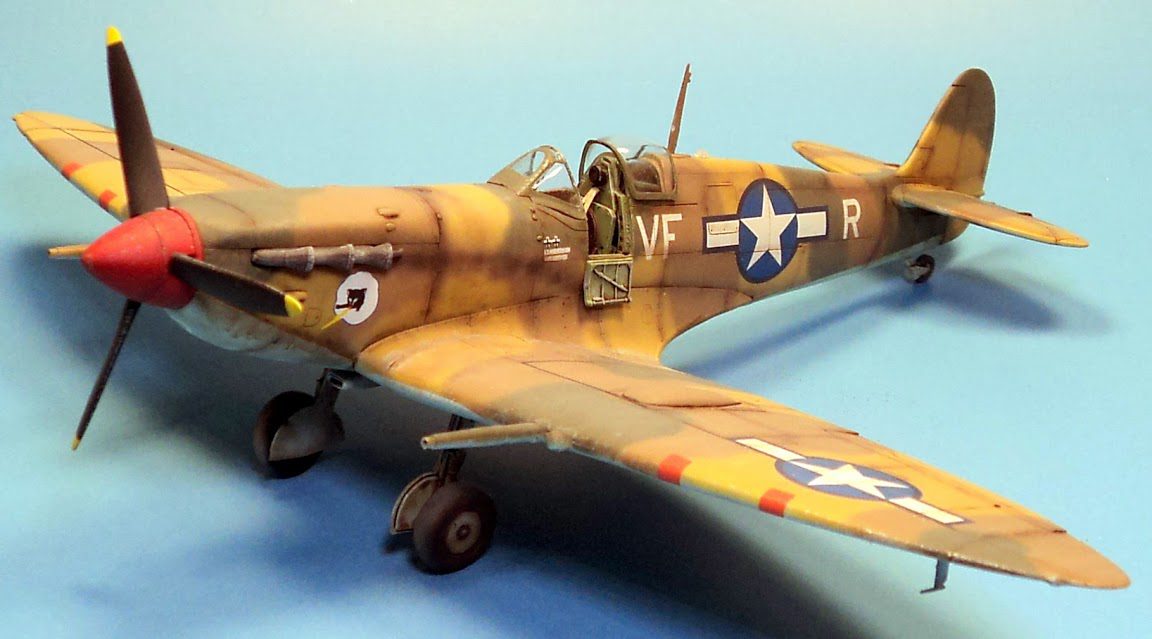

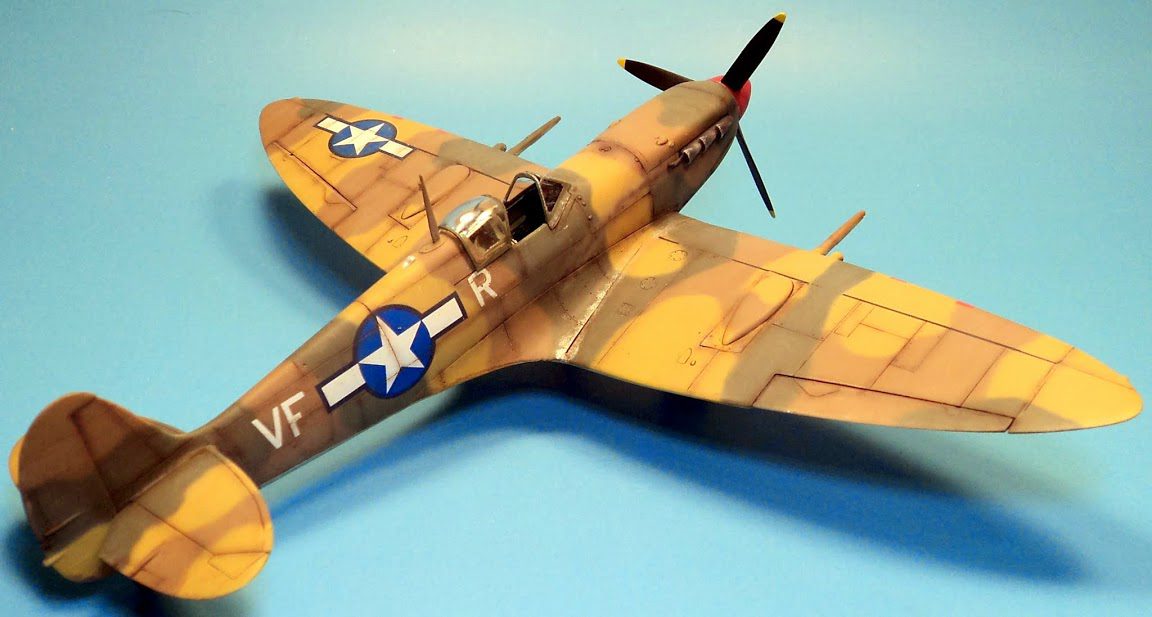
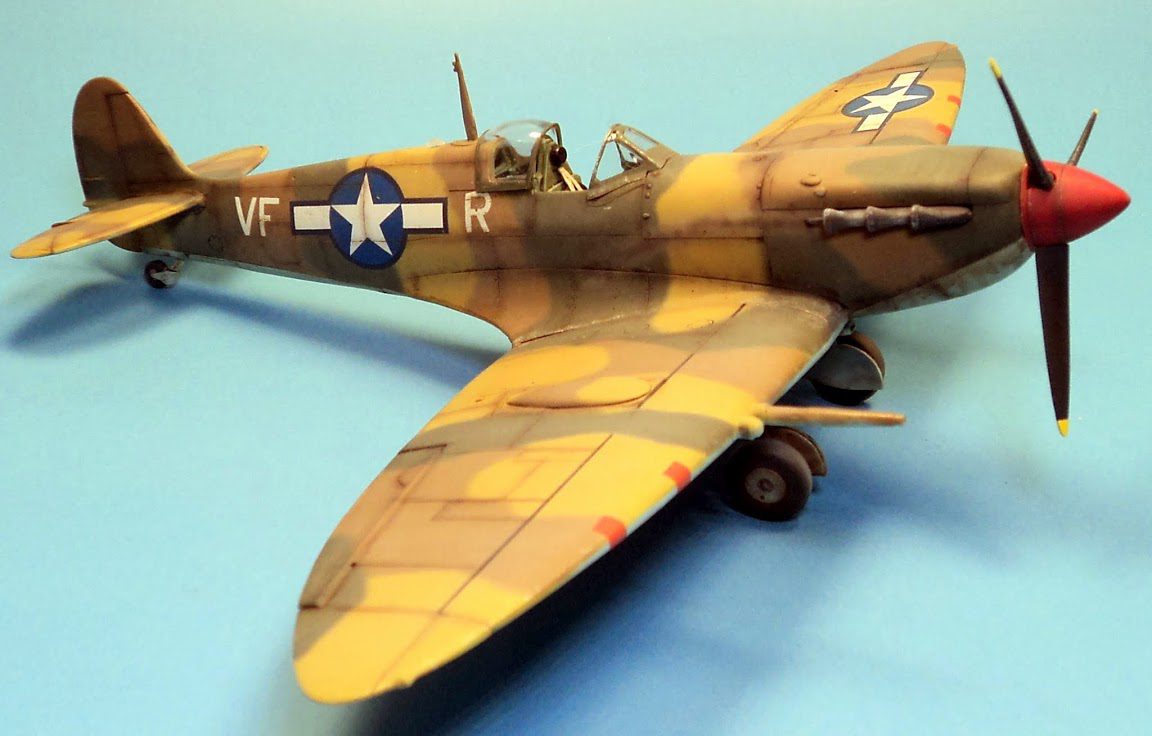
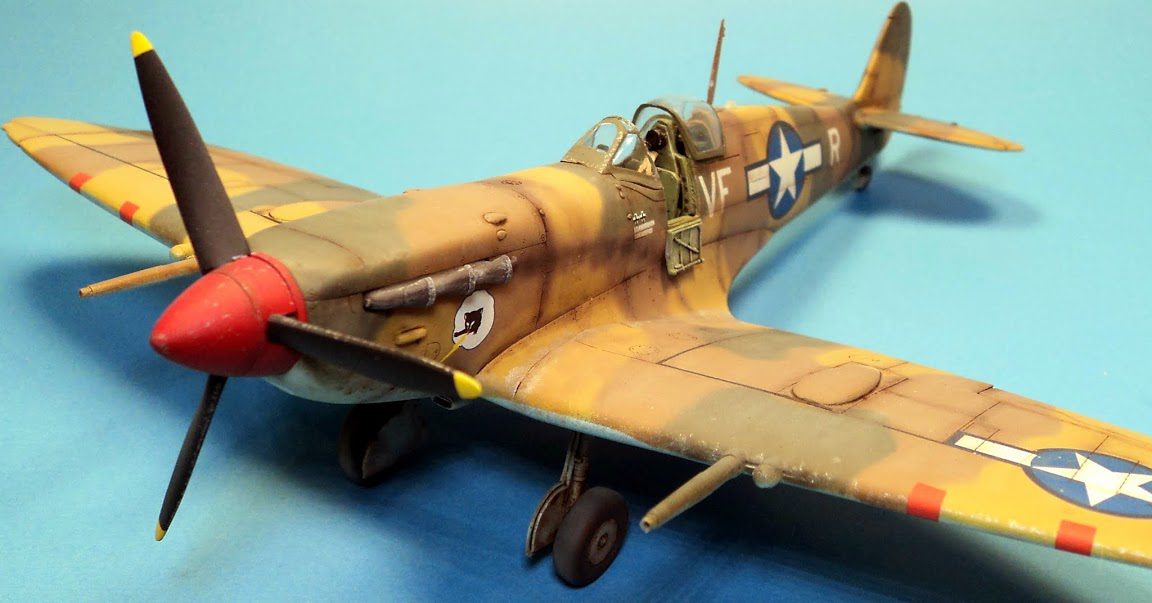
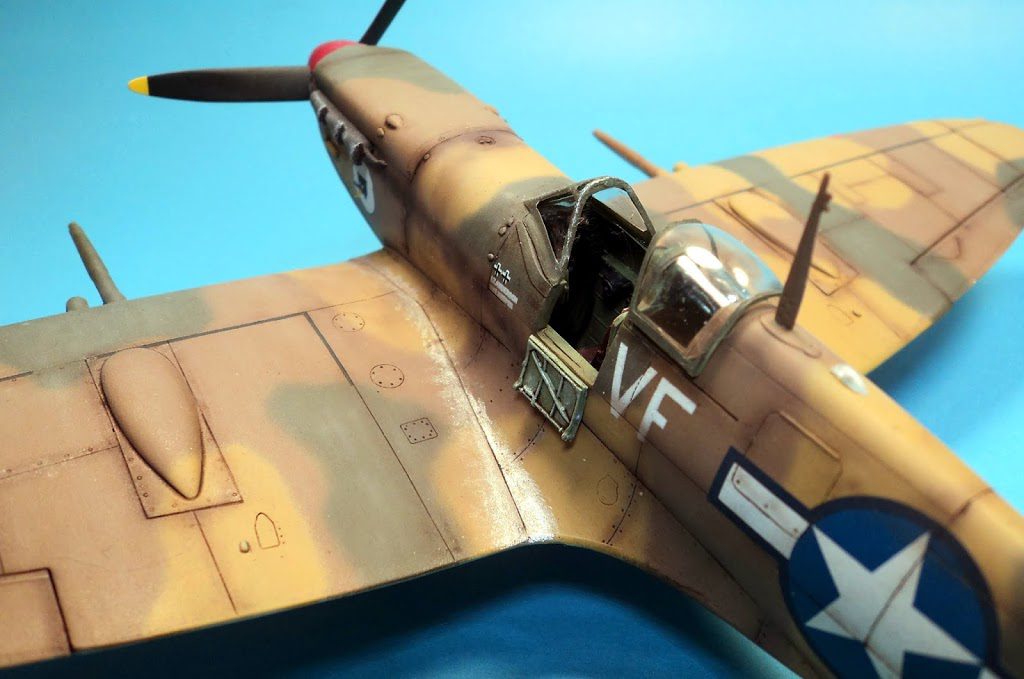
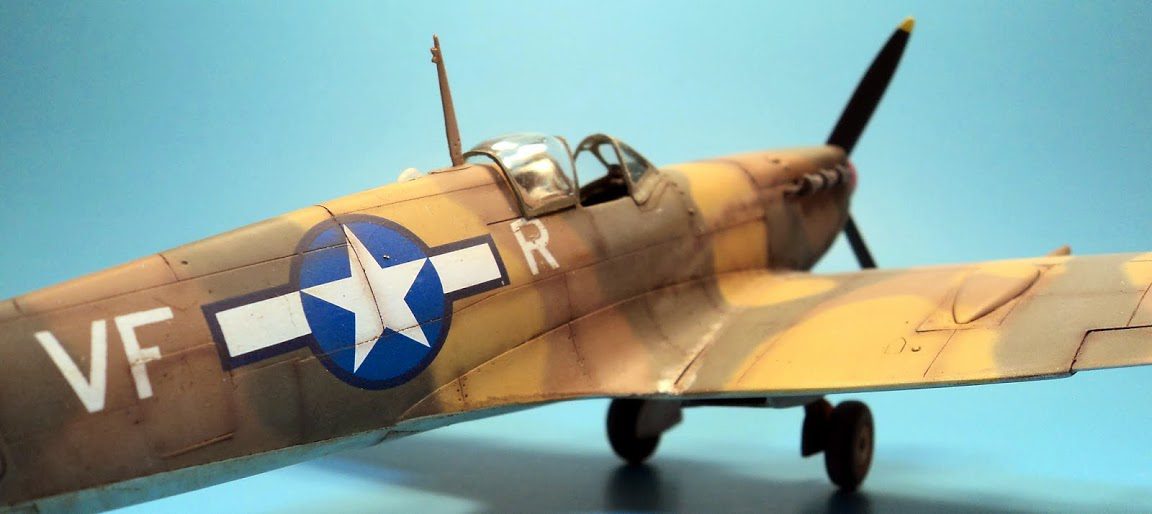
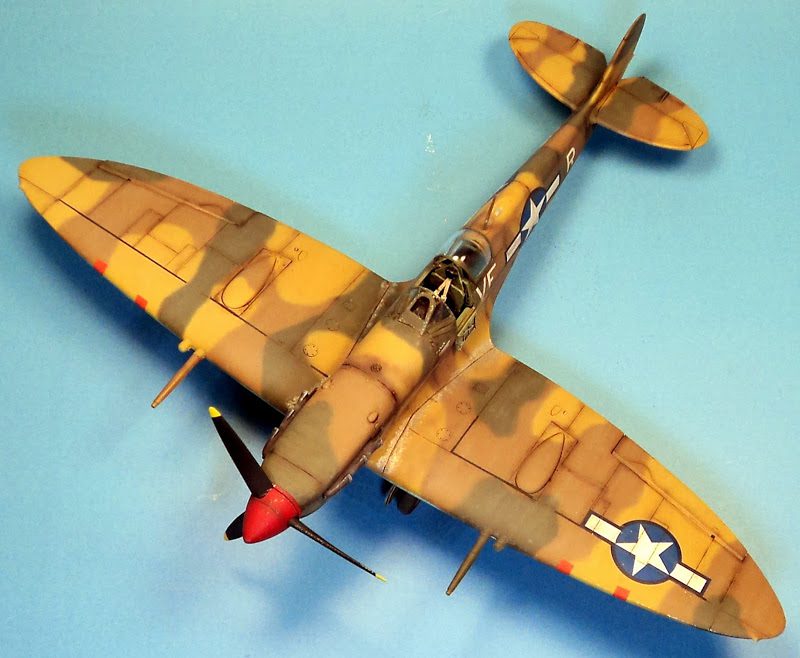
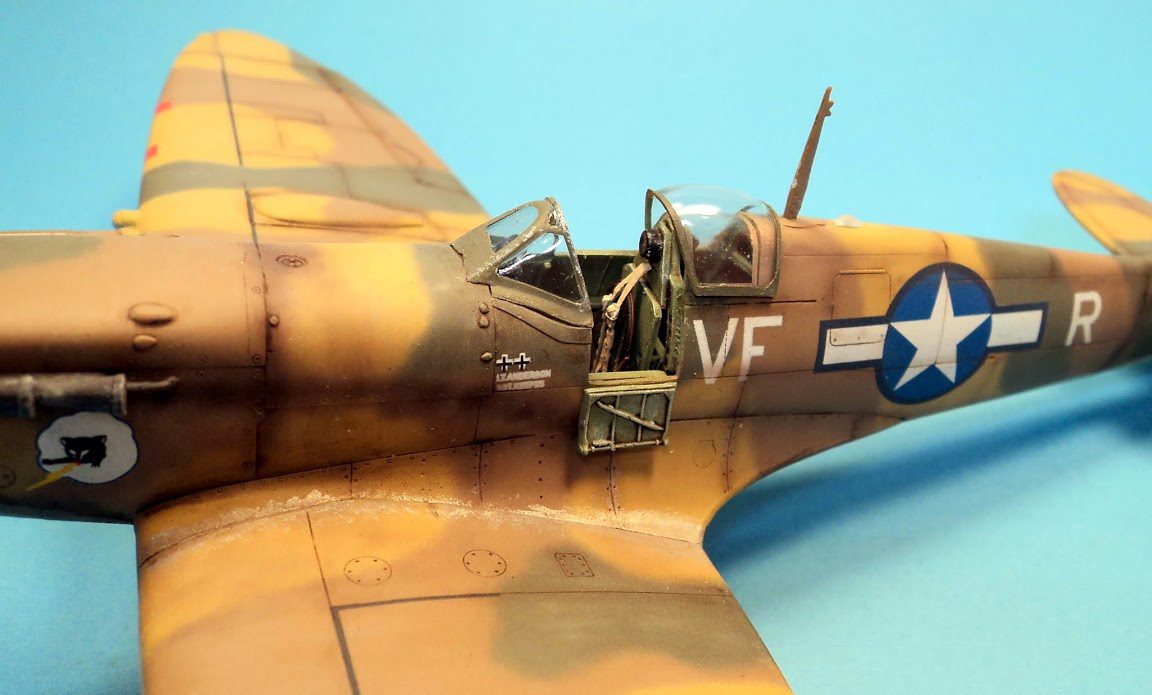
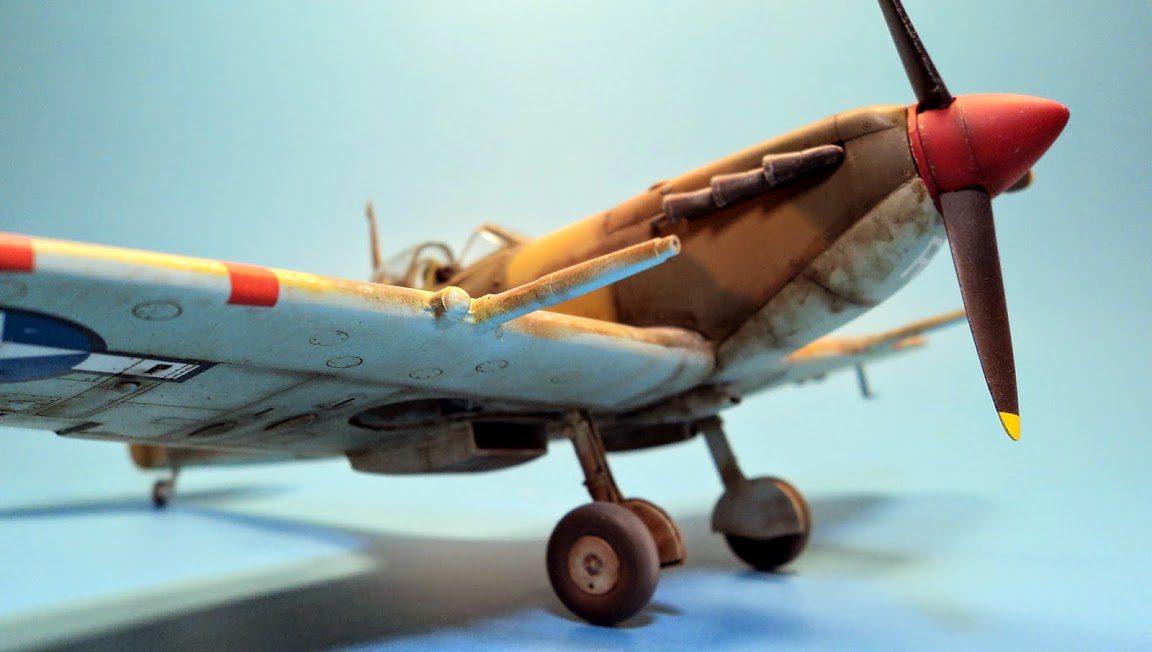


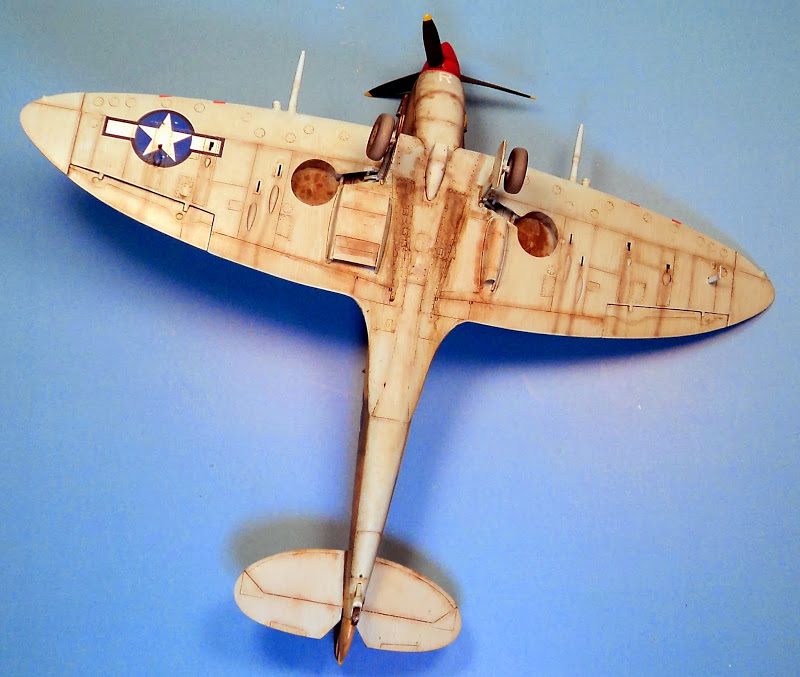


Leave a Reply